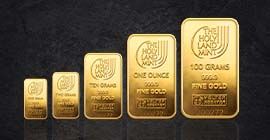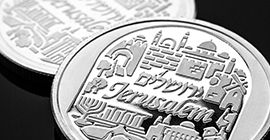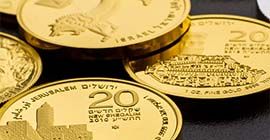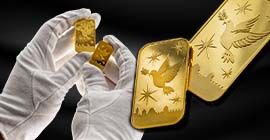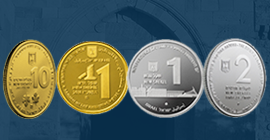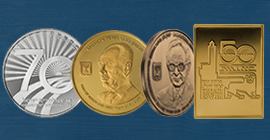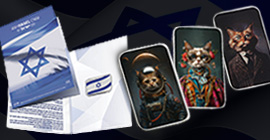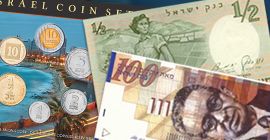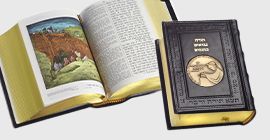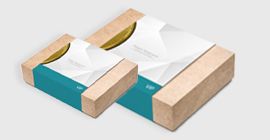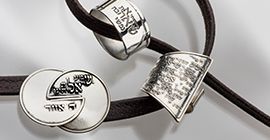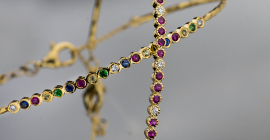Esperanto 3 medal Set - Gold ,Silver And Bronze
Gold | Silver | Bronze
SKU
71760331
Out of stock
$2,350.00
Notify when back in stock
You will be notified via email when this product is back in stock. The current price represents the current sale price of the item, however the company cannot guarantee this sale price once back in stock.
Specifications
| Issuing Year | 2007 |
|---|---|
| Material | Gold + Silver + Bronze |
| Fineness | 14k Gold/585 | Silver/999 | Bronze Tombac |
| Weight | Gold-17 g | Silver-1 oz. | Bronze-276 g |
| Diameter | Gold-30.5 mm | Silver-39 mm | Bronze-76.2 mm |
| Design | Ruben Nutels | Aharon Shevo |
120 YEARS OF ESPERANTO
90 YEARS SINCE THE DEATH OF DR. LUDWIG ZAMENHOF
STATE MEDAL 2007/5767
Dr. Eliezer Ludwig Zamenhof, a Jewish ophthalmologist, was born in Bialystok, Poland on December 15, 1859, the son of a language teacher. He himself knew about a dozen languages, including Yiddish and Hebrew. In 1887 he published a modest booklet titled “An International Language” under the pseudonym “Doktoro Esperanto” (“The Doctor Who Hopes”).
There have been some 500 experiments over the past 300 years to create a relatively easy-to-learn language. Esperanto is the only one that is alive and thriving. It is built on a limited number of rules, with no exceptions, and its vocabulary is based on a small number of roots and defined prefixes and suffixes. Zamenhof viewed Esperanto as a way of bringing people of different communities and faiths together by overcoming barriers to communication and promoting friendship between people. He said “Were I not a Jew from the Ghetto, the idea of uniting people would not have taken hold of my life”. Until his death on April 14, 1917, Zamenhof wrote poetry and prose in Esperanto, and translated the Bible as well as some of the world’s greatest literary works.
Esperanto organizations exist around the world. The World Esperato Assoication, based in Rotterdam Holland was founded in 1908. The World Conference of Esperanto, held every summer since 1905 , was hosted by Tel Aviv in the year 2000 and will be held this year in Japan.
The medal issue was overseen by a Public Committee whose members were: Professor Moshe Orfali, Dr. Shlomo Zusman, Malka Zemali, Jehoshua Tilleman, and Dr. Gian Piero Savjo.
Obverse: On the medal face, the likeness of Zamenhof wearing a green star, the traditional symbol of Esperanto.
Reverse: On the reverse, the new symbol - two “E”s meet to embrace the world – at the top of an “repaired” Tower of Babel, which now symbolizes communication, peace and brotherhood.
Designer:
Face – Ruben Nutels
Reverse – Aharon Shevo
Issue Name: Esperanto
Series Name: Made their Mark
| Catalog SKU | Condition | Diameter | Issue Price | Issuing Year | Material | Quantity | Weight |
|---|---|---|---|---|---|---|---|
| 31760310 | 30.5 mm | 2595 NIS | 2007 | Gold 585 | 120 | 17 gr | |
| 21760390 | 39 mm | 349 NIS | 2007 | Silver 999 | 360 | 1 oz. | |
| 11760760 | 76.2 mm | 233 NIS | 2007 | Bronze Tombac | Unavailable Info | 276 gr | |
| 71760331 | Gold-30.5 mm | Silver-39 mm | Bronze-76.2 mm | x | 2007 | 14k Gold/585 | Silver/999 | Bronze Tombac | x | Gold-17 g | Silver-1 oz. | Bronze-276 g |

